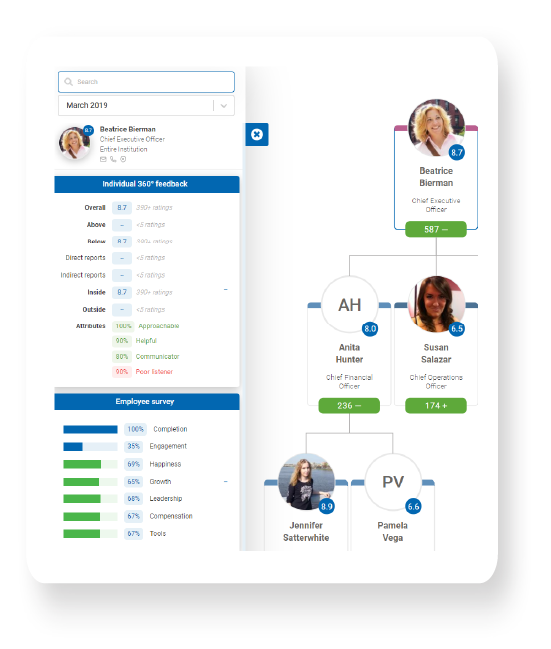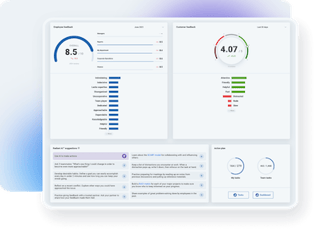.jpeg?width=300&name=shutterstock_257196214%20(1).jpeg)
DEI Series 3: Promoting Transparency with Feedback
This is the third in a series of blogs aimed at defining the role of feedback in fostering a diverse, equitable and inclusive workplace. In this installment, we outline how we work with our clients to build transparency with employees.
Transparent leadership
Transparency in leadership means pulling back the curtain that separates employees from the information company leaders use to make decisions. This can be information that drives company-wide changes, like results from an employee engagement survey, and information that guides personnel changes like promotions or role assignments.
A common misconception that keeps leaders from working to be more transparent is the belief that "transparency" = "no confidential information of any kind," but the goal behind transparency is not to undermine privacy or security. You don't have to give employees access to every bit of information - just the information that directly impacts them.
What's appropriate to share?
If you want to be more transparent but aren't sure where to draw the line, consider your sources. If you have access to data or information that came directly from employees, like meeting notes, surveys, performance reviews or project reports, then your employees will almost certainly benefit from and appreciate you sharing what conclusions you've drawn or what steps you plan to take.
Recent Harvard Business Review findings indicate that: "...managers’ assumption that their direct reports understand what they mean is due to a common cognitive bias called the illusion of transparency, in which people are so focused on their own intense feelings and intentions that they overestimate the extent to which their inner worlds come across to others. As a result their words may be too vague to convey their true intent. The illusion of transparency is one of the most common causes of misunderstandings when we communicate with others."
Closing the opportunity gap
So, what does transparent leadership have to do with diversity, equity, and inclusion?
Most organizations prioritizing DEI are laser-focused on the leadership gap, or the lack of diversity in management positions. For many businesses, the size of this gap reflects the collective success or failure of their DEI programs - it only closes when a series of other gaps are addressed first, like the visibility gap and the opportunity gap.
The visibility gap
This refers to a lack of diversity in "front and center" or "up and coming" employees. These are the employees who get recognized for their work and celebrated for their achievements.
The opportunity gap
This refers to a lack of diversity among those who receive opportunities to succeed or advance. These are the employees who get selected for high-value projects, management programs, special training, etc.
We can't close the leadership gap if these gaps are open. Efforts to cultivate a diverse leadership team will only be sustainable if diverse employees are recognized and given opportunities to shine.
The manager-employee connection
Employees rarely have access to the information managers use to evaluate them, much less the analysis and conclusions derived. When employees don't know what qualities managers find important, or how they measure up, they aren't as likely to succeed.
This might not be an issue if all employees were equally in the dark, but managers inevitably need to prepare for the future. They may give a few employees a peek behind the curtain to let them know what appeals to leadership and what drives their decisions. They may encourage them to learn a new skill or reveal an observed weakness the employee can now work to overcome. With that peek behind the curtain, a select group of employees now has an advantage over the broader group.
This is a driving force behind visibility and opportunity gaps. When one employee knows better than others what it takes to be successful or how to impress leadership, it's usually due to a connection with a company leader. Company leaders are far less likely to be diverse due to the leadership gap, and due to unconscious biases, are also less likely to identify and connect with diverse employees. This lack of transparency creates a vicious cycle: less diversity in leadership means less diversity among employees who receive recognition and opportunities, which in turn reinforces the lack of diversity in leadership.
Feedback and transparency
Feedback can be instrumental in closing these gaps and promoting transparent leadership. By providing robust 360° feedback to every employee, every person can then see how they are evaluated by managers, teammates, and people they manage. This brings employees out of the dark and provides custom insights on how they can move up based on what leadership values most. This also gives every employee the same set of information and the same level of transparency. When every employee in a diverse workforce can learn and grow from feedback trends that align with leadership's values, more recognition and opportunities will be given to diverse employees.





